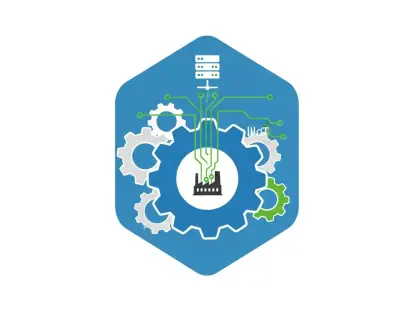In the heart of High Point, North Carolina, a historic center of American furniture production, a seismic shift is unfolding due to newly implemented tariffs on imported goods, sparking both opportunity and uncertainty for local manufacturers. These trade policies, enacted through a recent executive order, impose a 25% tariff on upholstered furniture and a 10% rate on softwood timber and lumber, with the furniture tariff set to rise to 30% by early next year. This move, aimed at bolstering domestic industries, has businesses grappling with a sudden spike in demand as retailers pivot away from imports, while simultaneously facing the daunting task of scaling operations amidst labor shortages and rising costs. The unfolding scenario raises critical questions about the industry’s ability to adapt and thrive under these new economic pressures, setting the stage for a deeper exploration of the challenges and potential solutions.
Industry Impacts and Opportunities
Demand Surge for Domestic Production
The introduction of tariffs has triggered a notable increase in demand for domestically produced furniture, particularly in High Point, a region long celebrated as a cornerstone of the industry. Local manufacturers report a flurry of inquiries from large retailers who previously relied heavily on imported goods but are now seeking to mitigate the risk of supply chain disruptions and escalating costs. This shift represents a significant opportunity for businesses to capture a larger share of the market. However, the sudden pivot has caught many off guard, as they struggle to meet the volume and speed required by these new orders. The pressure to ramp up production is palpable, with companies racing to secure contracts that could redefine their market position. This unexpected boom, while promising, underscores the urgent need for strategic adjustments to capitalize on the moment before the window of opportunity narrows.
Cost Implications of Trade Policies
Beyond the surge in demand, the tariffs introduce complex cost dynamics that could offset some of the initial benefits for manufacturers. While the policy aims to protect domestic industries, it also raises the price of imported components, such as electronic mechanisms often used in modern furniture. For many businesses, this creates a financial squeeze, as they must balance higher input costs against competitive pricing to retain customers. Additionally, the incremental increase in tariffs scheduled for early next year adds another layer of uncertainty, prompting companies to reassess their supply chains and explore alternative sourcing options. The ripple effects extend to consumers as well, who may face higher retail prices if manufacturers pass on these costs. Navigating this landscape requires a delicate balance of innovation and cost management, as the industry seeks sustainable ways to adapt to the evolving trade environment.
Challenges and Solutions for Growth
Scaling Production with Limited Resources
Meeting the newfound demand poses significant operational challenges for furniture manufacturers in North Carolina, where resources are often stretched thin. Many businesses, particularly smaller operations, lack the specialized machinery, such as CNC routers, needed to efficiently produce large orders like sofa frames at a competitive cost. Moreover, the scarcity of skilled labor exacerbates the issue, with companies struggling to find workers proficient in tasks like upholstery or operating advanced equipment. The current workforce in many firms is insufficient to handle the influx of orders, leading to delays and potential loss of business. Addressing these bottlenecks requires substantial investment in technology and training, a daunting prospect for enterprises already operating on tight margins. The path to scaling up is fraught with hurdles, yet it remains a critical step to seizing the opportunities presented by the shift in market dynamics.
Building a Skilled Workforce Pipeline
To overcome the labor shortage, innovative approaches to workforce development are gaining traction in the region. Educational initiatives, such as those offered by the Catawba Valley Furniture Academy, play a pivotal role by providing training in essential skills like sewing, cutting, and framing through accessible programs. These courses, available to the general public during evening sessions and to specialized groups during the day, aim to produce graduates ready to contribute immediately to the industry. The impact is evident in the stories of participants who see these programs as gateways to stable, well-paying careers in a historically significant trade. Beyond individual benefits, such efforts help rebuild the talent pool necessary for sustained growth. By integrating furniture-making skills back into broader educational curricula, the industry hopes to ensure a steady supply of qualified workers, addressing a critical barrier to expansion in the face of heightened demand.
Reflecting on Policy and Progress
Lessons from a Changing Landscape
Looking back, the implementation of tariffs on furniture and related materials marked a turning point for North Carolina’s manufacturing sector, revealing both the potential for growth and the depth of existing challenges. The surge in demand for domestic products highlighted the resilience of local businesses, even as they wrestled with the realities of scaling operations under constrained resources. The dual nature of the policy’s impact—offering a competitive edge while raising costs—underscored the complexity of adapting to rapid economic shifts. Initiatives to bolster the workforce through targeted training emerged as a beacon of hope, demonstrating the power of community and educational partnerships in addressing systemic gaps. As the industry navigated these waters, the importance of strategic planning and adaptability became clear, shaping a narrative of perseverance amid uncertainty.
Future Steps for Sustainable Success
Moving forward, the focus must shift to actionable strategies that ensure long-term viability for furniture manufacturers in the region. Investing in advanced machinery to enhance production efficiency should be paired with robust incentives to attract and retain skilled talent. Policymakers and industry leaders ought to collaborate on frameworks that mitigate the cost burdens imposed by tariffs, perhaps through targeted exemptions or subsidies for critical components. Expanding educational programs to reach a broader audience can further strengthen the labor pipeline, ensuring that the workforce evolves alongside technological advancements. Additionally, fostering dialogue between businesses and trade organizations could yield innovative solutions to supply chain challenges. These steps, taken collectively, offer a roadmap to not only weather the immediate impacts of trade policies but also build a more resilient and competitive industry for the years ahead.









